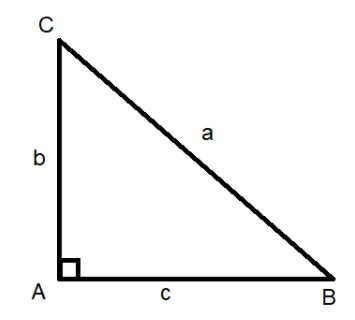Question
Question: If the angle \(\angle A={{90}^{\circ }}\) in the \(\Delta ABC\), then \[{{\tan }^{-1}}\left( \dfrac{...
If the angle ∠A=90∘ in the ΔABC, then tan−1(a+bc)+tan−1(a+cb) is
A. 0
B. 1
C. 4π
D. 6π
E. 8π
Solution
We first use the triangle formula of the angles and then the trigonometric additional form of tan−1x+tan−1y=tan−11−xyx+y. We also use Pythagoras’ theorem b2+c2=a2. We put the values of x=(a+bc),y=(a+cb) and find the particular solution for the inverse.
Complete step-by-step solution:
In ΔABC, we get ∠A=90∘. Therefore, ΔABC is a right-angle triangle whose hypotenuse is the opposite side of the angle ∠A=90∘.

From Pythagoras’ theorem we know that b2+c2=a2.
We now use the trigonometric additional form of tan−1x+tan−1y=tan−11−xyx+y.
Now we place x=(a+bc),y=(a+cb).
We get tan−1(a+bc)+tan−1(a+cb)=tan−11−a+bc×a+cba+bc+a+cb.
We multiply with (a+c)(a+b) and get
